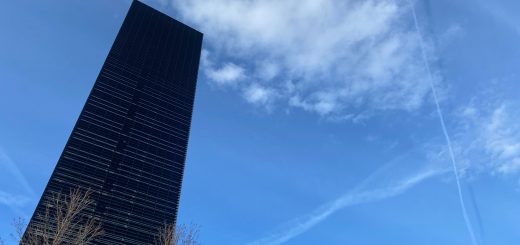Workplace of the future
I recently read “The Employees” by Olga Ravn. It is officially a science fiction book, which takes place in the not-so-distant future, yet quite a bit of distance away from the Earth. It is the story of a spaceship manned by humans and humanoids, or as Olga Ravn expresses “those who were born and those who were made. Those who will die, and those who will not.”
The ship discovers a new planet and takes a few strange objects from it. Objects might be alien lifeforms. It is not entirely sure what they are. In any case, the crew takes the responsibility to take care of the objects, clean them, observe them, and observe others taking care of them. Everyone starts getting a strange attachment to their work, getting stronger, more expressed feelings. Those develop further, in some cases to depression, delusions, nostalgia, and defensiveness.

I will not spoil the end but will spoil why I am writing about a sci-fi book. In a bit hidden way it is in fact a workplace book. It provides plenty of food for thought about the future of work.
Humans and non-humans working together
Both humans and humanoids in the book are employees. In fact, it is hard to separate who is who. The book consists of many small snippets of interviews/ conversations between the employees and researchers. Some of those seem to be told by humans, some by humanoids, but in many of them it is unclear – and the interviewee seems to be doubting themselves, asking questions whether they are humans, can become humans, or lost their humanity.
This is not that far from the world we already live in. We chat with chatbots, services are delivered by bots and many decisions are made by algorithms. Moreover, we can often not be sure whether the service we received was delivered by a human, or not. Have you ever experienced chatting to (what you think is) a nice employee that at some point appears to be a chatbot? Have you ever applied for a job and got a rejection suspiciously quickly, just to find out that the first CV screening is done by an algorithm?
We already work along with / or perhaps together with the robots. As machines are getting smarter and their number grows, the topic of how to do it best will not disappear. The conflict between humans and non-humans is only going to grow. “Robots taking our jobs” seems to be getting old and ridiculous, but it is not. While RPA technology is fairly mature and has taken over some of the most boring and repetitive work that humans in any case do not want to do, it will not be so funny when the machines become much better at performing the tasks of radiologists, paralegals, and software engineers.
Human resources vs. All-kinds-of resources
Many naturally turn their eyes to IT, the CIOs, and CTOs of the organizations when it comes to technology working along with humans. I believe HR is the function to focus on instead. Sounds funny? Isn’t HR mean to focus on humans?
It is, but I see that as part of the problem. If HR professionals want to prepare for the future of work, they need to understand how to manage a workforce that consists of not just humans, but bots, humanoids, algorithms, etc. In the quickly changing environment, these non-human employees will face problems very similar to the ones that humans face today:
- Development plans, with a focus on improving the skills that will soon be in high demand
- Conflict management: who (human or a bot) should get this new task? Who (human or a bot) is up for the next promotion?
- Process: what design principles do we use – those that are easier and more logical for the machines or for humans?
- Rewards: should we use the budget to raise salaries for humans or get that shiny new server for the bot?
Finally, just like in the book, we can ask ourselves questions: “Is what I am doing a job for a human? What does it take to be a human? At what point do I feel that I am treated unfairly, e.g. given work that is pointless, too mechanical, and without any sign of creativity?“


